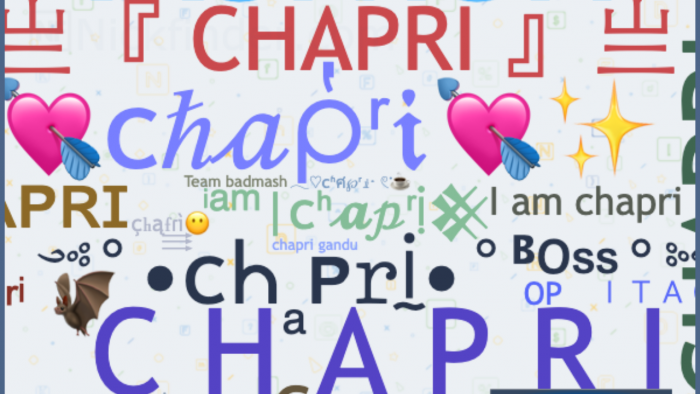Table of Content
Language evolves quickly online, and “Chapri” has become one of the most popular and controversial slang terms in India. While it seems like a casual insult, its meaning and usage reflect deeper aspects of youth identity, class, and internet culture.

What Does “Chapri” Mean?
“Chapri” is a derogatory term used to describe someone who appears cheap, flashy, or wannabe cool. It’s often linked with:
- Loud or fake fashion trends.
- Over-the-top TikTok/Reels content.
- Forced or exaggerated online personas.
- In short, it implies style without substance.
The Origin of the Term
The exact roots are unclear, but three main theories exist:
- Derived loosely from “chhappar” (hut/roof).
- Popularized during the TikTok boom (2018–2020) to mock cringeworthy videos.
- Adopted by urban youth to label overdone fashion and internet fame attempts.
How Is the Word Used?
“Chapri” is commonly seen in:
Memes mocking stunts, remixes, or cringe Reels.
Insults targeting fashion or music taste.
Trends, where some embrace “Chapri vibes” as a style identity.
Why “Chapri” Isn’t Always Harmless
Though often casual, the term can be problematic:
- Reflects class bias against small-town youth.
- Reinforces urban vs rural stereotypes.
- Used as a bullying tool on social media.
Chapri in Pop Culture
The term has seeped into entertainment:
Roast videos frequently use it.
“Chapri outfits” or “songs” describe loud trends.
Some influencers ironically embrace the tag for attention.
Should You Use the Word?
Its usage is debated. While part of online humor, it can cross into classist mockery. A better approach is to critique content, not people, and avoid shaming someone’s background.
Final Thoughts
“Chapri” is more than slang—it reflects India’s social media divide, mixing aspiration, humor, and stereotypes. Behind every joke lies a reminder that words can shape perceptions.
“Chapri” symbolizes how online culture highlights class and identity divides in India.


